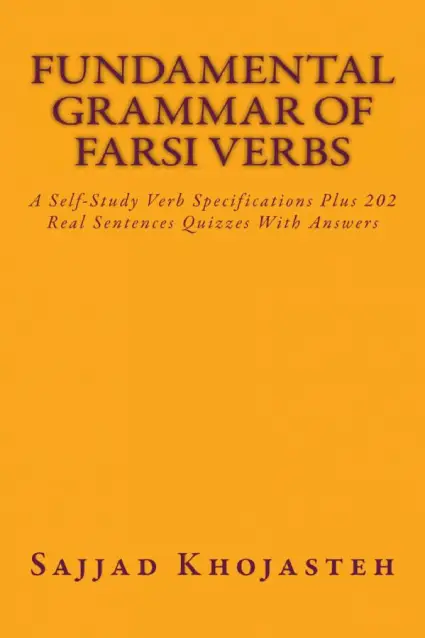Update Date: December 27, 2024
How do you talk about your daily life in Persian? If you’re learning the Persian language, mastering the simple present tense is one of the first steps to expressing yourself clearly and naturally. The simple present tense in Persian is used to talk about habits, routines, general truths, and things happening right now. It’s essential for holding everyday conversations, introducing yourself, and sharing your thoughts.
In this post, the team at GetBookOnline.com—a group of native Persian teachers passionate about helping you learn Persian online—will guide you through understanding and using the simple present tense. We’ll show you how to conjugate verbs in this tense and provide clear examples to help you start speaking Persian confidently.
The good news is that the simple present tense in Persian is straightforward to learn. Whether you’re a beginner or looking to improve your grammar skills, our step-by-step approach will make it easy for you to grasp this important aspect of the Persian language.
By the end of this post, you’ll not only understand how to form the simple present tense but also feel more confident using it in your everyday conversations. So, let’s make learning Persian an enjoyable and rewarding experience! Stay with us and discover how simple it can be to speak Persian with confidence. Ready? Let’s get started!

The Usage of Simple Present in Persian Language
The simple present in Persian language, known as “حال ساده” (hāl-e sādeh), is used to describe actions that occur regularly, habitual actions, general truths, or actions happening at the present moment. Here are some common usages:
- The simple present in Persian language is used to describe actions that occur regularly or habitually. For example: من هر روز به مدرسه میروم. (man har rooz be madrese miravam.) – I go to school every day.
- It is used to express general truths or facts that are always true. For example: زمین گرد است. (zamin gerd ast.) – The Earth is round.
- The simple present in Persian language can sometimes be used to talk about future events, especially in informal speech. For example: فردا با دوستانم میروم. (fardā bā doostānam miravam.) – Tomorrow, I’m going out with my friends.
The Structure of Simple Present in Persian Language
To form sentences in the simple present in Persian language, follow these steps:
- Start with the Subject (نفر اول): Begin your sentence with the subject, which can be a pronoun (I, you, he, she, it, we, they) or a noun.
- Include the Object (if applicable) (شیء مفعول): If your sentence includes an object (the thing or person affected by the action of the verb), place it after the verb.
- Add any Additional Details (اطلاعات تکمیلی): You can include additional details such as adverbs of frequency (always, usually, sometimes, rarely, never), time expressions, or adjectives to provide more context to your sentence.
- Add the Verb (فعل): Make the imperative form of the verb then conjugate it accordingly.
Here’s a simple example:
– Subject + Object+ Additional Details+ Verb
| Pronoun | Persian | Phonetics | English |
|---|---|---|---|
| من (I) | خورم | khoram | I eat |
| تو (You – singular) | خوری | khori | You eat |
| او (He/She/It) | خورد | khorad | He/She/It eats |
| ما (We) | خوریم | khorim | We eat |
| شما (You – plural/formal) | خورید | khorid | You eat (plural/formal) |
| آنها (They) | خورند | khorand | They eat |
Form Questions in Simple Present in Persian Language
To form questions in the simple present in Persian language, you generally follow these steps:
- Start with the Question Word (کلمه سوالی): Begin your question with a question word or particle, depending on the type of question you are asking. Common question words in Persian include:
- چه (che) – What
- چهطور (chetor) – How
- چرا (cherā) – Why
- کی (ki) – Who
- چیست (chist) – What (for definitions or explanations)
- آیا (āyây) – Yes/No questions
2) Place the Subject (if applicable) (فاعل): If the question requires specifying the subject, place it after the question word.
3) Add the Verb (فعل): Use the verb based on the subject.
4) End with the Question Mark: In some cases, you may need to add a question mark (؟) at the end of the sentence to indicate it is a yes/no question.
Here are some examples of different types of questions in Persian:
- Yes/No Questions (سوالات بله/خیر): آیا تو میآیی؟ (āyā to miāyi?) – Are you coming?
- Question Words (سوالات چه، چهطور، چرا، کی): چه میخوری؟ (Che mikhorî?) – What are you eating?
Form Negative Sentences in Simple Present
To make different negative sentences in the simple present in Persian language, you typically follow these steps:
- Add نـ (na) to the beginning of the verb: Attach نـ to the beginning of the verb to form the negative form. This indicates “not” or “don’t.”
- Place the subject (if applicable): Place the subject before the negative particle نـ.
تو درس نخوانی. (to dars nakhāni.) You don’t read the lesson.
In these examples, نـ (na) is added to the beginning of the verbs to indicate negation, and the subject follows afterward. This creates negative sentences in Persian.
Mastering the Simple Present in Persian Language: Your Gateway to Fluent Communication
Mastering the simple present in Persian language serves as a cornerstone for effective communication. Simple present in Persian language allows us to convey actions, habits, and facts in the present moment with clarity and precision. By understanding its structure and usage, you gain the power to express yourself confidently in various contexts.
Whether you’re describing daily routines, stating facts, or asking questions about ongoing actions, the simple present tense empowers you to engage in meaningful conversations. From casual chitchats to formal discussions, this fundamental tense forms the backbone of your Persian language proficiency.
Remember, forming sentences in the simple present tense in Persian follows a straightforward pattern: subject + object+ verb. By adhering to this structure and incorporating the negative particle “نـ” when needed, you effortlessly construct sentences that accurately convey your intended meaning.
As you delve deeper into mastering the simple present in Persian, don’t hesitate to reach out if you encounter any challenges or seek further guidance. The GetBookOnline.com team stands ready to assist you at every step of your language-learning journey.
Whether you’re a beginner eager to grasp the basics or an intermediate learner striving for fluency, our native Persian teachers provide personalized support tailored to your learning needs. Contact us to discover how we can help you unlock the full potential of your Persian language skills.
With dedication and practice, proficiency in the simple present tense will propel you closer to fluency and open doors to endless opportunities for meaningful communication in Persian. Embrace the journey, and let’s embark on this enriching linguistic adventure together!
